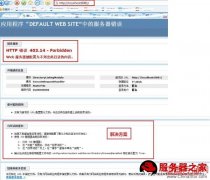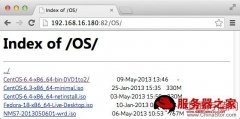本文介绍Nginx+Tomcat6服务器环境如何配置负载均衡,希望对于初学Nginx服务器相关的朋友有帮助,更多Nginx安装、配置、报错处理等资源请本站内搜索。。
1.安装Nginx和Tomcat,这里假定nginx-0.7.65,Tomcat6.x。(Nginx可以从http://nginx.org/en/download.html下载)
安装Nginx
# ./configure
# make
# make install
在这里假定Nginx安装在nginxhost,tomcat分别安装在tomcathost1和tomcathost2上;
2. 修改/usr/local/nginx/conf/nginx.conf文件,
http {
…
upstream myhost {
server tomcathost1:8080 weight=1;
server tomcathost2:8080 weight=2;
}
server {
…
location / {
proxy_pass http://myhost;
}
…
}
…
}
3. 确定nginxhost和两台tomcathost可以互访,并且两个tomcat机器在一个网段内;
4. 确定两台tomcat host多播已经打开,在Linux机器上可以使用cat /proc/net/dev_mcast检查,如果文件存在基本上就是打开了;另外确定两台tomcat机器的/etc/hosts文件中包含“xxx.xxx.xxx.xxx hostname”比如“172.17.1.101 tomcathost1”或“172.17.1.102 tomcathost2”;
5. 修改两个tomcat的conf/server.xml文件,对Engine节点分别添加jvmRoute="tomcat1"和jvmRoute="tomcat2",并添加以下内容:
<Cluster className="org.apache.catalina.ha.tcp.SimpleTcpCluster"
channelSendOptions="6">
<Manager className="org.apache.catalina.ha.session.DeltaManager"
expireSessionsOnShutdown="false"
notifyListenersOnReplication="true"/>
<!--
<Manager className="org.apache.catalina.ha.session.BackupManager"
expireSessionsOnShutdown="false"
notifyListenersOnReplication="true"
mapSendOptions="6"/>
-->
<Channel className="org.apache.catalina.tribes.group.GroupChannel">
<Membership className="org.apache.catalina.tribes.membership.McastService"
address="228.0.0.5"
port="45564"
frequency="500"
dropTime="3000"/>
<Receiver className="org.apache.catalina.tribes.transport.nio.NioReceiver"
address="auto"
port="4000"
selectorTimeout="100"
maxThreads="6"/>
<Sender className="org.apache.catalina.tribes.transport.ReplicationTransmitter">
<Transport className="org.apache.catalina.tribes.transport.nio.PooledParallelSender"/>
</Sender>
<Interceptor className="org.apache.catalina.tribes.group.interceptors.TcpFailureDetector"/>
<Interceptor className="org.apache.catalina.tribes.group.interceptors.MessageDispatch15Interceptor"/>
</Channel>
<Valve className="org.apache.catalina.ha.tcp.ReplicationValve" filter=".*/.gif;.*/.js;.*/.jpg;.*/.png;.*/.htm;.*/.html;.*/.css;.*/.txt;"/>
<ClusterListener className="org.apache.catalina.ha.session.JvmRouteSessionIDBinderListener"/>
<ClusterListener className="org.apache.catalina.ha.session.ClusterSessionListener"/>
</Cluster>
6. 创建一个web app,这里为了简单使用tomcat自带的examples web app(webapps/examples),修改其中的WEB-INF/web.xml文件,在其中<display-name>Servlet and JSP Examples</display-name>节点后添加<distributable/>表明此应用与集群服务器复制Session;
7. 在两个Tomcat的webapps/examples目录下各创建一个test.jsp文件,用来测试Cluster中两个Tomcat的Session复制,
<html>
<head>
<title></title>
</head>
<body>
<%
String mydata = request.getParameter("mydata");
if (mydata != null && mydata.length() != 0) {
session.setAttribute("mydata", mydata);
}
out.println("request.getLocalAddr(): " + request.getLocalAddr());
out.println("<br/>");
out.println("request.getLocalPort(): " + request.getLocalPort());
out.println("<br/>");
out.println("Session ID: " + session.getId());
out.println("<br/>");
out.println("mydata: " + session.getAttribute("mydata"));
%>
<form>
<input type=text size=20 name="mydata">
<br>
<input type=submit>
</form>
</body>
</html>
8. 启动Tomcat和Nginx,访问http://nginxhost/examples/,可以修改其中Session中的值,并且可以看到两个tomcat的Session中的值是一样的;
声明: 此文观点不代表本站立场;转载须要保留原文链接;版权疑问请联系我们。










